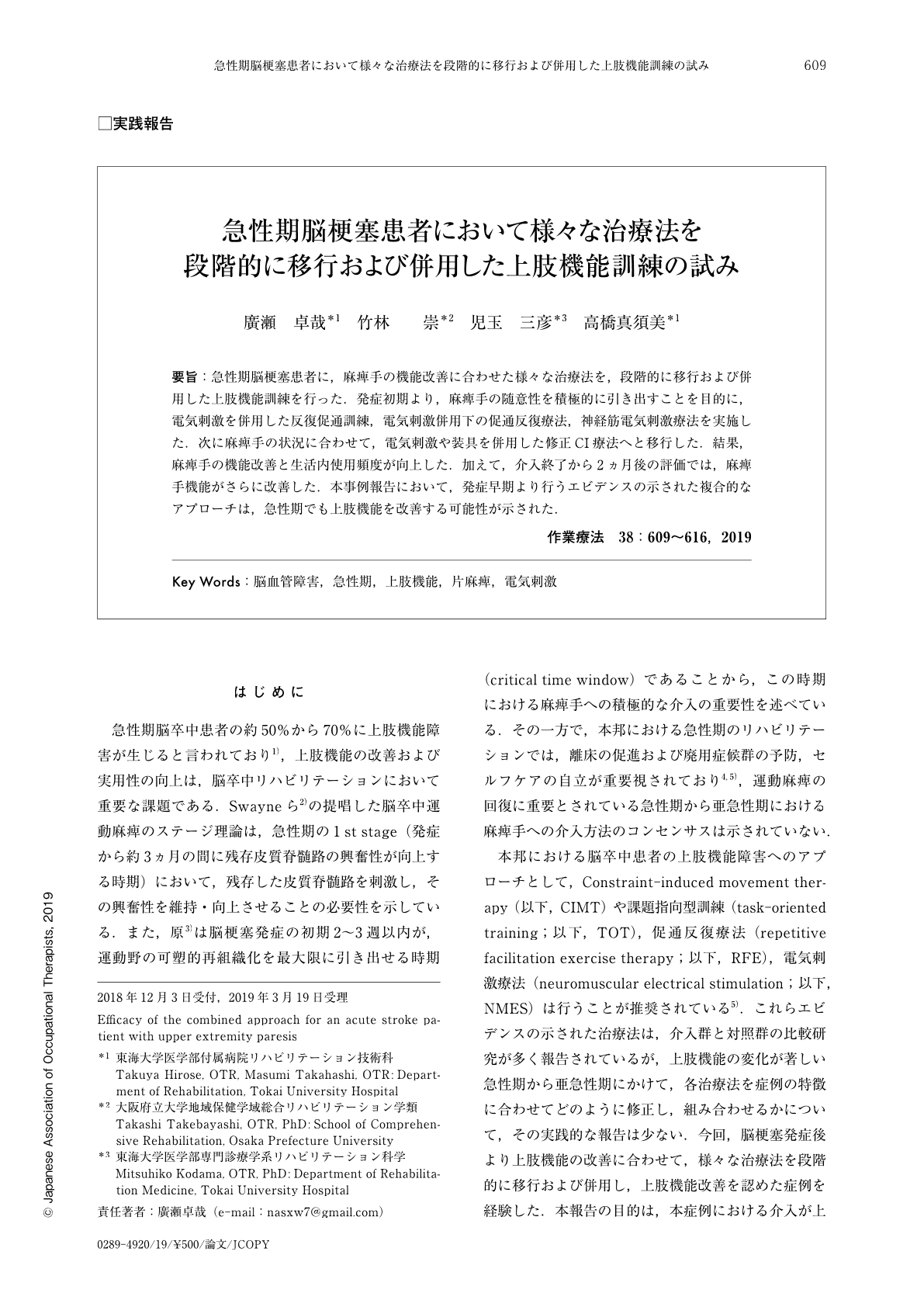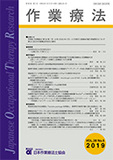Japanese
English
- 販売していません
- Abstract 文献概要
- 1ページ目 Look Inside
- 参考文献 Reference
- サイト内被引用 Cited by
要旨:急性期脳梗塞患者に,麻痺手の機能改善に合わせた様々な治療法を,段階的に移行および併用した上肢機能訓練を行った.発症初期より,麻痺手の随意性を積極的に引き出すことを目的に,電気刺激を併用した反復促通訓練,電気刺激併用下の促通反復療法,神経筋電気刺激療法を実施した.次に麻痺手の状況に合わせて,電気刺激や装具を併用した修正CI療法へと移行した.結果,麻痺手の機能改善と生活内使用頻度が向上した.加えて,介入終了から2ヵ月後の評価では,麻痺手機能がさらに改善した.本事例報告において,発症早期より行うエビデンスの示された複合的なアプローチは,急性期でも上肢機能を改善する可能性が示された.
We gradually introduced several treatments according to an improvement of upper extremity function in an acute stroke patient. From the early stage of stroke onset, we combined the following approaches, which improved the affected upper extremity function: Finger Equipped Electrode electrical stimulation (FEE-ES), repetitive facilitation exercise therapy (RFE), and neuromuscular electrical stimulation (NMES). Then, we use the combined approaches with the modified constraint-induced movement therapy (mCIMT), electrical stimulation, and orthosis, and adapted these to the upper extremity function in a stroke patient. As a result, the upper extremity function and amount of use in daily life improved in the stroke patient. In addition, affected upper extremity function in the stroke patient showed further improvement two months post intervention. This case study showed that evidence-based combined approaches might improve arm function in the acute phase.

Copyright © 2019, Japanese Association of Occupational Therapists. All rights reserved.


